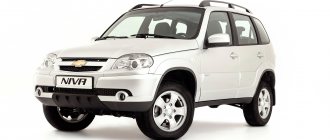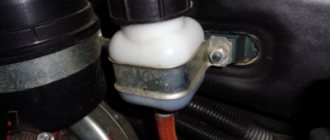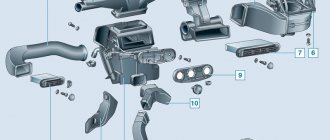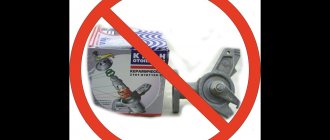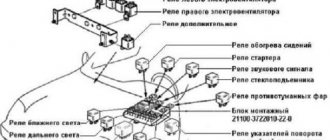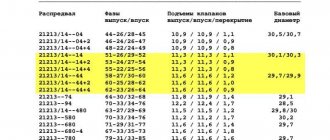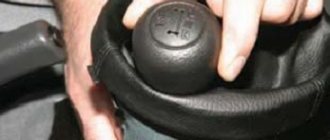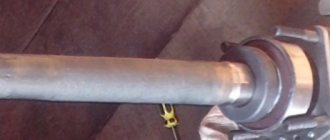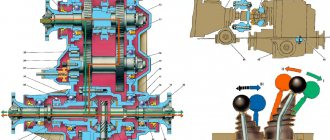Problem
Every second letter contains a question and a request: explain why I do not recommend a domestic product. After all, unlike oils, Niva antifreeze is a fairly simple thing. There are two reasons.
- At one time it was customary to criticize GOST standards. Now we will break everything, there will be competition and it will be good. It turned out to be bad)) The only regulatory act that exists today is GOST 28084–89, which was adopted during the Soviet era. And even today it is quite outdated, even for the domestic automobile industry. But in our country we have such magical standards, which are called TU (technical conditions). And for each area they are different. That is, the military has its own specifications for tank coolant. And the Ministry of Agriculture has its own specifications - for the ZIL-130 car. Can you imagine what a riot this is for imagination?? And most importantly, the manufacturer does not deceive you)))
- I am a bad chemist, to be more honest - very bad, and to be completely honest - then none at all)) Therefore, this paragraph was written under the dictation of a professor at the St. Petersburg Institute of Technology)) Ethylene glycol is a fairly expensive product, so our Papuans replace it with cheap bodyagi, consisting of glycerol and methanol. And if the first component is very harmful to the cooling system, then the second is simply incompatible with human health. And the methyl compound with water at temperatures above 50-60 degrees begins to “gnaw” aluminum. In chemistry, this term is called “etching.” And one more funny moment. Methanol evaporates when heated, the client adds water. So the process is repeated several times. As a result, the system simply produces colored water, which will freeze at the first frost.
FakeHeader
Comments 48
Antifreeze is the same as antifreeze... well, so that they know)
Phoenix red antifreeze
Antifreeze Aga Red
Antifreeze and antifreeze are ethylene glycol with water, plus dye and additives that no one can detect by eye.
Good afternoon. I use green antifreeze, but... If the problem is with an unpredictable increase in pressure, then it is not difficult to solve it - There is a valve with a spring in the cover of the expansion barrel. It's on the latches. We pull it out of there, bite off half of the spring and put it back together. I found only one downside here - from time to time you need to add coolant - it boils over. But this may not even be a minus - the liquid is renewed.
Read more: Where is the engine number written?
If you drive through normal mud, half of the antifreeze will boil away in 5 minutes. I tried adding antifreeze and antifreeze, with the cap unscrewed, most liquids boil at a temperature of 90-95 degrees according to a working sensor, which is next to the thermostat and a regular thermometer stuck in the expansion tank. At the same time, there is still no command to turn on the fans, and everything boils over, you can check it yourself. Most antifreezes and antifreezes are bad or fake; you need to buy them only in trusted places and are expensive. . Everyone liked the antifreeze polar explorer the most.
Dzerzhinsky antifreeze was filled from the factory - this is GM-AvtoVAZ's answer. I use antifreeze - G12 or G12+. The level in the tank almost does not rise when antifreeze is heated, unlike antifreeze, and it is not so smelly.
Antifreeze for “every day”. Green. There is no other one)
Which is better oil or oil... KMK today one of the best antifreezes is SINTEC EURO green ;-)) or something cheaper from this manufacturer’s line...
G12+ Red Lukoil.
Antifreeze "Felix". No comments. Anyway, the Shniv cooling system periodically requires attention, so the antifreeze is always fresh)))
Green antifreeze from Lukoil, I take it exclusively at branded gas stations, no problems)
I use antifreeze Felix, for 110 thousand no problems with the cooling system
and I changed the Felix antifreeze, I thought it was of poor quality when I saw the brown foam. But the problem, alas, remains (((Only now there is no foam but an oil film apparently...
cylinder head breakdown. oil gets into the antifreeze. Over time, the oil pipes will become very swollen
Before the gasket blew and oil got into the coolant there was antifreeze. I flushed the system 4 times with a jet and once with cheap antifreeze. Now I'm pouring Felix antifreeze. I don't feel much difference. If only it doesn’t stink as much when overheated as the former antifreeze. The tolosol has turned brownish, I think I’ll fork out the cash and change the barrels and pipes, but that’s a completely different story
So, after the capitalization, I had a brown layer on top in the tank (I described the problem in the magazine earlier). I thought the antifreeze was not of good quality, I changed the antifreeze, the problem reappeared after a while. Although almost 6 months have passed and no problems with the engine have been noticed (pah-pah). The mechanic said maybe it was leaking from the radiator. And I myself am guilty of a poor-quality gasket, because oil is slowly leaking around the perimeter of the cylinder head. Over 10,000 km I probably added a little more than 1 liter of oil. So I’m thinking of leaving it and driving another ten kilometers. or change(((
I decided for myself that as long as it doesn’t break, I won’t change it. Because everything is fine anyway. The car is 6 years old, I’ll climb something else and break it along the way
I drink everything that is more expensive than 1000 rubles per 10 liters, and this is Felix, Syntek, Nord. From g12+ red, switched to green.
I always poured Felix antifreeze and changed it after 60 thousand km, as required by the service book. Now the mileage is 190 thousand. There were no problems with the pipes, with the exception of antifreeze leakage under the volute (I installed another clamp) and from the lower radiator pipe (you can’t get there without removing the radiator). I changed the tank a couple of times, then adjusted the lid
Read more: Hyundai Solaris steering column
I filled up Sintek with 12++, and before that I did this www.drive2.ru/l/469003282971361942/
If you do nothing with the cooling system, then with antifreeze it will flow the same way, only more expensive) You need to change the tank to a high-quality one with a normal valve that does not rot, adjust the valve, fill in antifreeze
You just need to seriously inspect the cooling system once and forget for a long time, and changing the pipes one at a time is a waste of time, always in trouble and repairs. I always pour Castrol concentrate for myself, well, of course I dilute it with water according to the scheme. For example, when I need to replace a radiator , I do this and forget for a very long time www.drive2.ru/l/464034589925442160/
Do you know why tanks burst? The boiling point of Dzerzhinsky antifreeze is 84 degrees Celsius, the boiling point of Siberia antifreeze is 86 degrees Celsius, the boiling point of water is 91 degrees Celsius. (all measurements were carried out in the mountains at an altitude of 1700 meters because I live high, on the plain it will be 8-9 degrees higher, respectively) This means that at the same temperature, the pressure in the system will be different. With antifreeze, the likelihood of leaks increases. I myself drive on antifreeze, I have to force one fan to start manually so as not to bring the antifreeze to the boiling point, so there were no leaks and no leaks, not to mention the tank.
Lil Felix, on a trip to Russia, switched to some kind of Dzerzhinsky, they said it was just bullshit from one barrel. The return filter is a classic one, I change it regularly, the fluid is clean.
Antifreeze - it’s a hell of a lottery here. Basically a leftist of some kind, he eats aluminum for his sweet soul. The neighbor saved a lot of money - first the pump, then the thermostat, and just now the plug-plug just fell out of the block. Lada 2107 is one of the latest, well-groomed and not capricious. But after salting, a black streak began to appear. He switched to antifreeze after a pipe burst and all the antifreeze was drained into the atmosphere.
The Lada engine is not glamorous so that it can amuse itself with multi-colored liquids and will work on antifreeze and water
Right now antifreeze costs the same as normal antifreeze. Lew Felix or Syntek (what can be quickly found in local stores if necessary). No problems. Z.Y. Cheap (fake) antifreezes for 400 rubles boil at 80 degrees.
Water from the swamp is ok.
Water from the swamp is ok.
Water removes heat much better than antifreeze. I wish I didn't freeze in winter...
Well, so that it doesn’t freeze, I pour water from the Gulf of Finland, it’s salty. And so the water cannot freeze because... The engine is heating it up!
Types and properties of coolants for cars
The best option for effectively lowering the temperature is antifreeze. This is a liquid that contains:
- distilled water;
- ethylene glycol or propylene glycol (less aggressive substance);
- additional additives.
Antifreeze based on ethylene glycol. Additives, in turn, are divided into the following subtypes:
- silicate;
- based on organic acids (carboxylate);
- hybrid antifreezes (based on the two described above).
Carboxylate coolants have good heat transfer and high cooling temperatures. They reliably fight fat deposits and have a longer service life. Silicate antifreezes perfectly prevent corrosion and reduce the temperature of aqueous solutions. They are considered universal.
Carboxylate coolant after 60,000 km.
Classification (VAG concern)
The most popular classification is the Volkswagen-Audi tolerance system. Now they have changed the designations, but everyone basically writes these “mysterious symbols” on the cans.
G12 – base ethylene glycol, additives – carboxylate compounds. Usually red. It acts locally on areas of corrosion and for this reason has significantly better heat removal. Long-playing. Service life without loss of characteristics is more than 5 years. G12+ - polypropylene glycol base. The color is usually orange. Made for the sake of the environment. Non-toxic, can decompose naturally in nature. The boiling point of this antifreeze is increased to 135 degrees.
Neste antifreeze, concentrate
Freezing and crystallization. What is it and what is the difference. According to our GOSTs there is no difference, but according to Western standards there is. Crystallization temperature is the state at which crystals begin to form in a liquid. Ice slush forms. The freezing point is the point at which antifreeze becomes a “solid state.” It does not harden like ice, but rather looks like cooled semolina or oatmeal (whoever liked which one more in kindergarten). For the antifreeze I presented in this article, the crystallization temperature is minus 35, the pour point is minus 42.
ready antifreeze Total
What coolant is recommended for the Niva Chevrolet car
In general, both G12 type antifreeze and antifreeze are suitable for the car.
In a Chevrolet Niva, coolant replacement is done as a standard - once every 2 years, or every 60 thousand kilometers. Another factor indicating the need to change the coolant is a change in its color. It acquires a reddish tint, which indicates a change in chemical properties.
On cars with air conditioning, it is better to use G12 antifreeze. Usually the plant fills it with TOSOL TS-40 (manufacturer: Dzerzhinsk). Mixing different types of coolant is prohibited. An exception for topping up is FelixProLonger liquid (from the same manufacturer).
Replacing antifreeze on a Niva Chevrolet car must be carried out taking into account the strict frequency established by the manufacturer - once every 40,000 km, or (if the car owner rarely uses the car) every two years. At the same time, it is necessary to check the antifreeze level and replace it if it darkens or appears brown. Also, replacement of antifreeze may be necessary if the composition does not meet the required density or repair of the engine (cooling system elements) is required.
What antifreeze should I put in a Chevrolet Niva?
Many car enthusiasts are interested in the question: what antifreeze is best to fill in a Chevrolet Niva? When choosing the right composition, the car enthusiast will need to rely on the advice provided by the manufacturer and on his own experience in operating and maintaining these cars.
The most suitable options are listed below:
- Vehicles manufactured in 2002 can be operated with red liquid of category G12. It's best to go with G-Energy.
- Cars produced in the range of 2003-2009 are suitable for category G12 red antifreeze. Options include Lukoil Ultra, Havoline, G-Energy and others.
- Since 2010, Chevrolet Niva works well on red antifreeze of the G12 ++ class, including the brands VAG, Freecor QR, and FEBI.
How much antifreeze is required for a Chevrolet Niva? In order to fill the cooling system of a car, approximately 10 liters of working fluid are required.
Recommendations for choosing for Chevy Niva
To determine which antifreeze is best to pour into your Chevrolet Niva, you need to know which one was filled from the factory, since each model has a lot of specific nuances. However, in most cases, the choice of coolant depends on the year of manufacture of the car:
- for older models that were produced before 2001-2002, class G12 fluid is suitable;
- for later models (from 2003 to 2010), G12+ antifreeze is suitable;
- for modern models (manufactured after 2010), it is recommended to purchase coolant category G12++.
Also, many people use the domestic mixture Antifreeze class TS-40 as antifreeze. Motorists often speak negatively about Antifreeze, but in its properties this liquid is practically no different from foreign antifreezes. To understand the absurdity of negative reviews, you need to remember that most Chevrolet Niva cars are filled with antifreeze at the factory.
To find out more information, watch the video in which an expert answers the question of what is better - antifreeze or antifreeze:
Replacement process
To replace antifreeze on a Niva Chevrolet, find an inspection hole. You can also work on an overpass or lift. It is important that the car stands strictly horizontally, with mandatory fixation, in order to avoid movement during the work process. If you can't find a perfectly level area, find an area where the front of the machine is slightly higher.
Before draining the antifreeze, perform a few more manipulations - wait until the engine cools down, remove the negative voltage from the battery, and also prepare the tool for work. You will need a ten-socket wrench, a funnel for filling coolant, pliers, a screwdriver, a new portion of antifreeze and a container for draining the coolant. Use a canister, bucket, basin or bottle as a drainage container.
Antifreeze Frostschutzmittel A from Febi
Let's start with how to drain antifreeze. Take a series of steps:
- Open and secure the hood.
- Unscrew the cap on the expansion tank. As noted above, wait until the engine cools down to avoid burning your hands. As a last resort, the coolant temperature should not exceed 90 degrees Celsius. Carefully unscrew the cap, take your time. Allow hot air to escape, which helps reduce pressure. After this, unscrew the cap completely.
- Unscrew the plug from the drain hole, and then wait until all the coolant comes out. Don't forget to place the container first to avoid getting antifreeze on the ground.
- As soon as the waste fluid leaves the system, screw the plug back into place.
To avoid air locks in the system, discard the tube from the fitting of the throttle assembly. To do this, take a screwdriver or pliers, and then, using the tool, loosen the fastener, and then move it back. Now remove the tube from the throttle body fitting.

